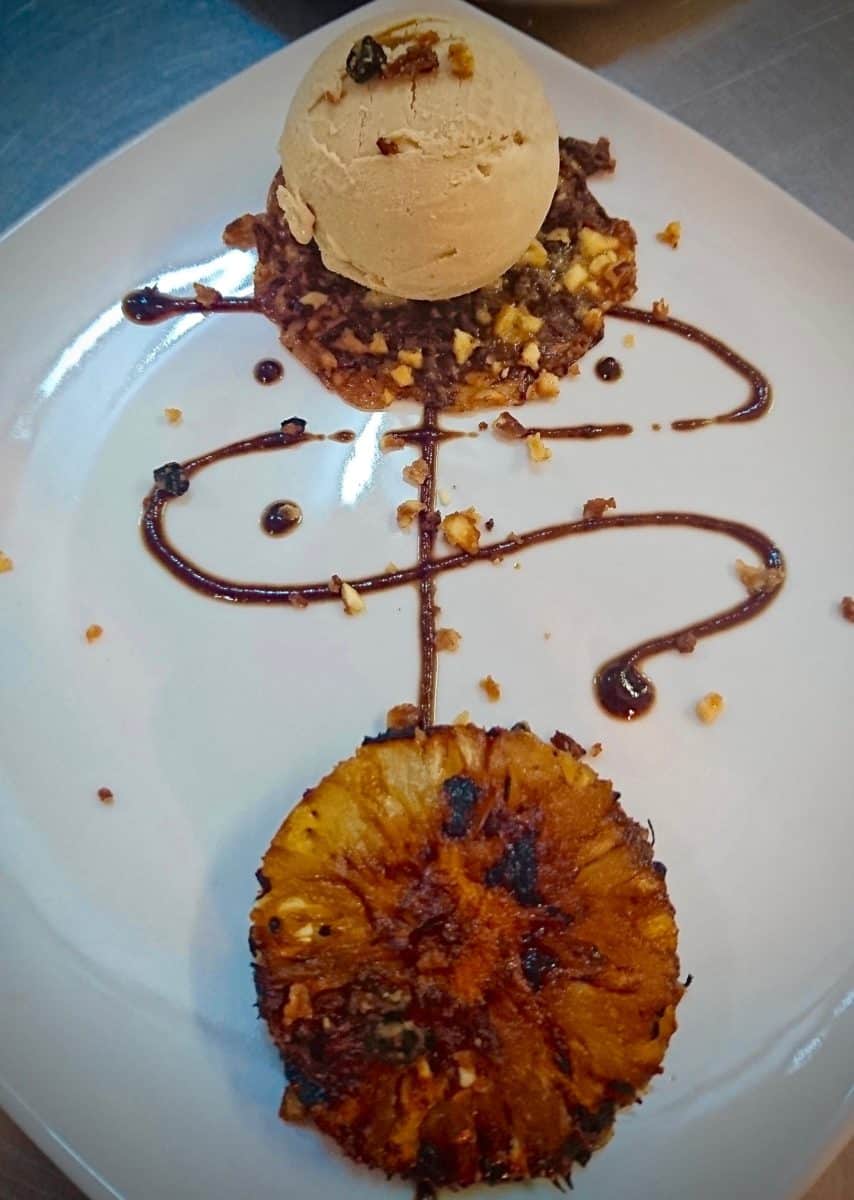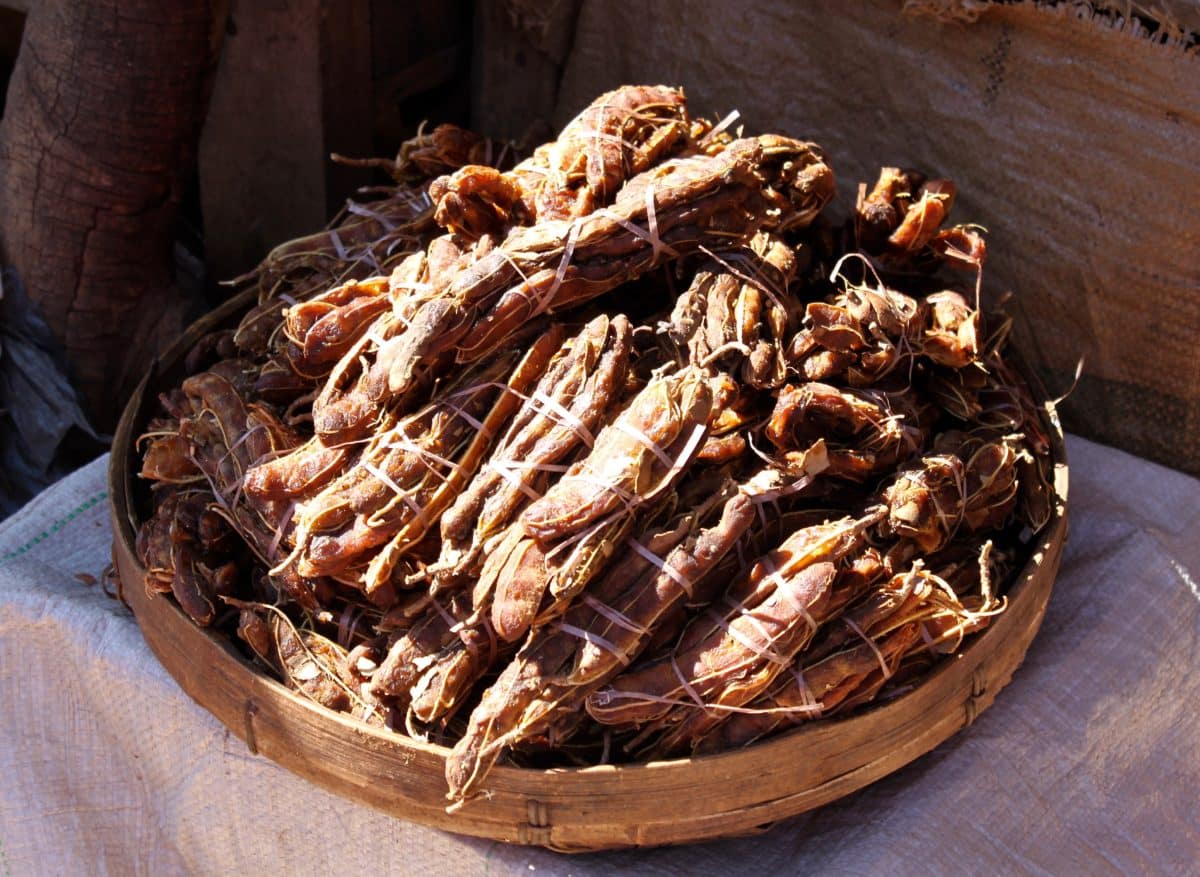I’m always looking for ways to channel the renowned chef and author Yotam Ottolenghi. His recipes, rooted in his Middle Eastern upbringing, have made me much bolder in the kitchen. As an originator of unexpected yet sublime combinations of flavor, color and texture, Ottolenghi is a mythical shapeshifter who influences all that I harvest from my vegetable garden, and even more so, from the bush in which I live, not far from Victoria Falls, in Zambia.
Chief among ingredients beloved by Ottolenghi is tamarind. Imagine my surprise, then, when I found out tamarind was a tree indigenous to Africa, and specifically, in the upper Zambezi Valley where I live. I had always thought that Tamarindus indica (its etymological name) originated in Asia and was carried to Africa via caravans of Arab traders. But it appears to have been the other way around, because tamarind has been naturalized for so long on the Indian subcontinent it’s often reported as having originated there.
Towering wild tamarind trees thrive along the banks of the Zambezi River not far from our farm. They are called musika by the indigenous Tonga and Tokaleya people who have lived near, or under them, for millennia. Musika is foraged and consumed fresh in-season when the pulp is a balanced mix of sweet and sour. Out-of-season, it is found dried in palm-sized bundles and tied-up with string. The longer musika dries, the more sour the fruit pulp becomes. It’s available throughout the year in most of our native markets.
I was first introduced to musika by my Zambian sous chef, Adelina Banda, unaware that it was, in fact, tamarind. Not that I knew much about tamarind either, other than it was an essential ingredient in Indian cooking. Adelina told me that, traditionally, Zambians removed the sticky, russet-colored pulp encasing the seeds and mixed it with water and a little sugar, transforming it into a refreshing drink.


As with so many wild edibles, musika is also highly-prized for its medicinal value. Its long, bean-like, sandy brown pods, filled with phytochemical-rich pulp, are used here in traditional medicine for poultices to reduce fevers, abate stomach upsets or constipation, and to treat inflammation. Musika is high in tartaric acid, sugar, B vitamins, and calcium.
Three years ago, when I was gifted a small bundle of musika, I didn’t know that Mexicans made a drink called agua de tamarindo, almost identical to that made by the Zambian people. I didn’t know that musika was used as a base in many different ethnic cuisines from Asia, the Mediterranean, the Middle East, and North Africa.
I didn’t know that its flavor presented punchy undertones to soups, preserves, glazes, tagines, and ice cream. And, mostly, I didn’t know that I was living among one of the most versatile ingredients I’ve ever come across — until I fell under the spell of Yotam Ottolenghi. Besides Adelina, I have him to thank for inspiring the recipes I’m developing with our native musika.
Three years ago, when I was gifted a small bundle of musika, I didn’t know that Mexicans made a drink called agua de tamarindo, almost identical to that made by the Zambian people. I didn’t know that musika was used as a base in so many different ethnic cuisines from Asia, the Mediterranean, the Middle East, and North Africa. I didn’t know that its flavor presented punchy undertones to soups, preserves, glazes, tagines, and ice cream. And mostly, I didn’t know that I was living amongst one of the most versatile ingredients I’ve ever come across, until that was, I fell under the spell of Ottolenghi. Besides Adelina, I have him to thank for inspiring the recipes I’m developing with our native musika.



I didn’t know that its flavor presented punchy undertones to soups, preserves, glazes, tagines, and ice cream. And mostly, I didn’t know that I was living amongst one of the most versatile ingredients I’ve ever come across, until that was, I fell under the spell of Ottolenghi. Besides Adelina, I have him to thank for inspiring the recipes I’m developing with our native musika.

Musika Ice Cream on a Mongongo Nut Florentine with Fore-Roasted Pineapple
I turn to the following recipes I’ve developed using musika over and over again (the Musika puree recipe is used in both of the following two recipes). ![]()
